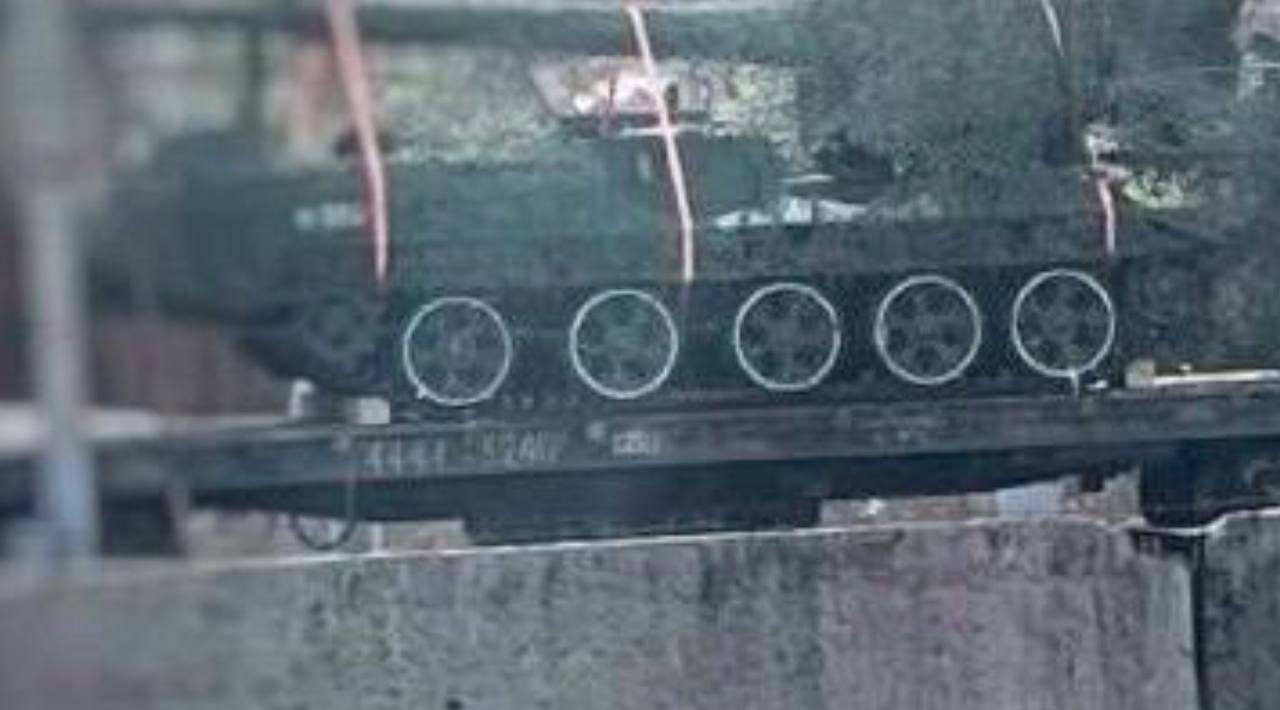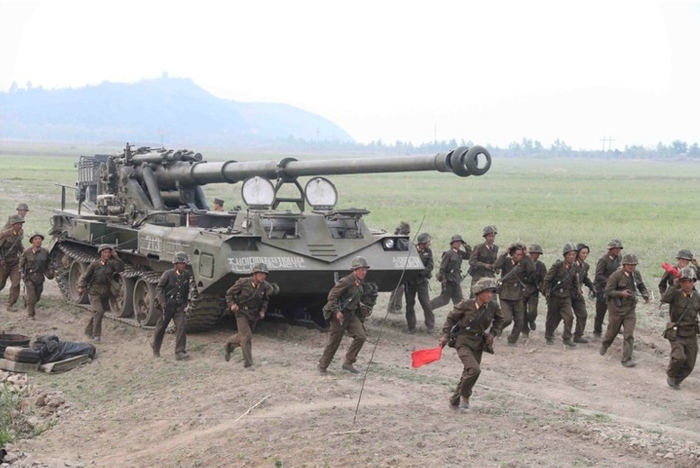North Korean M1989 Koksan long-range artillery systems spotted in Russia
14 November, 2024 North Korean M1989 Koksan artillery system on parade in North Korea. In Russia, a North Korean long-range 170 mm M1989 Koksan howitzer was probably spotted for the first time during transportation by rail. Russian propagandist media shared the photo with the equipment.
The exact location and time of the photo are currently unknown. However, the Atesh resistance movement has previously claimed that Russian artillerymen were training on North Korean self-propelled artillery systems. The vehicle on the railroad platform has the appropriate silhouette and characteristic pattern of the five-roller tracked chassis of the M1989 Koksan self-propelled howitzer.
 First potential sighting of a North Korean M1989 Koksan self-propelled artillery system in Russia, November 2024.
First potential sighting of a North Korean M1989 Koksan self-propelled artillery system in Russia, November 2024.
This artillery system uses a rather unique 170-mm caliber, which, in combination with a long barrel, provides a long range.
According to available data, the range of conventional shells fired from this system reaches 40 kilometers, while for active-reactive ammunition, this figure is close to 60 kilometers. The firing rate is 1-2 shots every 5 minutes. This range significantly exceeds the capabilities of all Russian cannon artillery, which can only be matched by the Soviet 203-mm 2C7 Peon cannon with active-reactive projectiles.
M1989 Koksan is a conventional name for a North Korean 40-ton self-propelled artillery system that was first seen at a parade in the city of Koksan in 1989. It is an evolution of the M1978 system, developed in the 1970s.
 M1989 Koksan artillery system during training in North Korea.
M1989 Koksan artillery system during training in North Korea.
The Koksan self-propelled artillery system is a model of a "strategic" North Korean weapon that was developed before the advent of missile weapons as a means of delivering deep artillery strikes on the South Korean capital across the demarcation line, the conditional "border" between the two republics. An early version of the M1978 was already used in combat during the Iran-Iraq war on the side of Iran.
Their combat debut took place in January 1987 during the Kerbala-5 operation near Basra. The Koksans were used for massive artillery attacks, including the use of full-range rocket-propelled grenades. Today, this weapon can pose a significant threat as a counter-battery weapon that can reach Ukrainian long-range artillery firing positions, including PzH2000, CAESAR, and 2C22 Bohdana.
In addition, the emergence of these systems in Russian service will give them access to an arsenal of 170-mm ammunition, which has remained unused in North Korea's warehouses until recently.